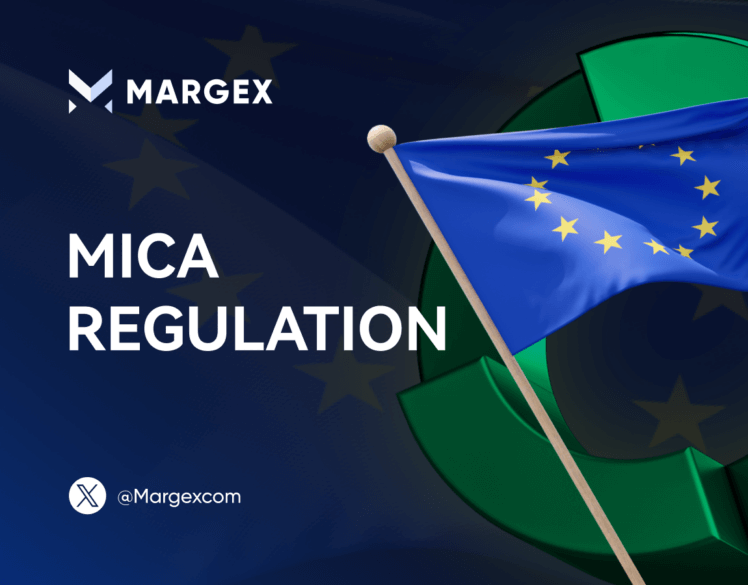EU Traders Losing Access to Stablecoins Over MiCA Regulation

Earlier this week, Binance delisted almost a dozen stablecoins, restricting access to them for its EU customers. That was down to the Markets in Crypto-Assets (MiCA, also MiCAR – Markets in Crypto-Assets Regulation) integrated by the European Union.
Binance has delisted several trading pairs with such stablecoins as USDT, DAI, FDUSD, and TUSD. However, there are stablecoins compliant with MiCA – USDC and EURI. The newest and widely endorsed Ripple USD (RLUSD) stablecoin has not been approved by the MiCA regulation.
MiCA offers a clear regulatory framework for stablecoins for digital currencies. Its goal is to boost transparency and protect traders against scammers and dirty players in the crypto space.
Two key MiCA phases against uncompliant stablecoins
MiCA regulations is being implemented in two stages. The first one started on June 30 last year. It targeted stablecoins specifically. The compliance set of rules refers to them as asset-referenced tokens and e-money tokens. Stablecoin issuers must follow strict requirements, which include reserve management, operational standards, and full transparency. This resulted in many European exchanges in 2024 delisting stablecoins that did not meet the necessary criteria, e.g., Tether’s USDT. Thus, they wanted to avoid regulators imposing penalties.
The second phase started on December 30, 2024, which forces crypto trading venues – exchanges, custodians, etc. – to delist stablecoins or obtain obligatory licensing and comply with the rules.
Exchanges begin delisting stablecoins under MiCA
The first stablecoin to bump into hurdles when trying to comply with MiCA regulation standards was USDT. Its issuer, Tether, has failed to gain regulatory approval in Europe. That led many crypto exchanges to begin preventive delisting USDT to stay compliant with the first phase of MiCA. USDT is the largest stablecoin in terms of market capitalization, and it holds the fourth place on the CoinMarketCap scale.
Last year, rumors emerged that EU exchanges would begin delisting USDT on December 31. Bitcoin price tumbled a little at that time on what came to be called Tether FUD (fear, uncertainty, doubt). However, Tether CEO Paolo Ardoino stated that the FUD was arranged and fueled by Tether haters to “promote some alternative useless tech.”
However, in March 2024, OKEx delisted several pairs with USDT in Europe in an attempt to meet the MiCA regulation standards. So did Uphold, removing not only USDT but also DAI, USDP, TUSD, GUSD, and others. Bistamp followed suit.
While Tether has so far failed to comply with MiCA, Circle’s USDC has been doing well. USD Coin (USDC) obtained an Electronic Money Institution (EMI) license from France. The license was issued by the local banking regulator, ACPR, which made USDC one of just a few stablecoins allowed to trade legally in the EU. It remains available on large exchanges and is still part of financial platforms that follow regulatory compliance.
This strengthened USDC’s position in the crypto market and allowed it to gain a larger share on crypto exchanges that delisted or suspended USDT. The same goes for the stablecoin EURC, which was launched in the EU last year.
Ripple launches RLUSD just in time
In December 2024, the Ripple blockchain firm rolled out its new product – Ripple USD (RLUSD) stablecoin pegged to the US dollar. It received a license from the New York Department of Financial Services (NYDFS).
In December and January, the newly launched stablecoin processed 33,953 transactions on the XRP Ledger and 1,690 on the Ethereum chain. RLUSD is now expected to apply for regulatory authorization with MiCA regulation. It is already compliant with the most rigid regulatory requirements, thanks to the license above. This would open the path for RLUSD to European exchanges.
After the launch, the asset was listed by several large exchanges, including some operating in Europe: Bitget, Bullish, Moonpay, Bitstamp, Uphold, and others.
If RLUSD succeeds in securing a MiCA license, it has high odds of taking USDT’s market share in Europe, shrinking that of USDC due to Ripple’s market position, which surpasses Circle greatly.
Still, fintech company Revolut, which operates in the UK and EU, has integrated RLUSD, allowing its customers access to this product. Still, until RLUSD is approved by MiCA regulations, its use on European crypto exchanges may be restricted.
Potential MiCA impact on EU stablecoin market
The recent integration of MiCA is likely to transform the European crypto space. EU exchanges are eager to align with the new law, thus, they are delisting USDT, targeting compliant assets, such as USDC and potentially RLUSD, which is striving to get an approval in this area.
The enforcement of MiCA regulations compliance is also likely to drive local financial institutions to adopt compliant stablecoins. Any institution operating in the EU must only work with digital assets obeying strict requirements regarding transaction transparency and fiat backing management.
Now, stablecoin issuers are facing a difficult choice – to comply with MiCA regulations or leave the EU market. The newly implemented regulatory framework has put the European crypto market at a crossroads, and only time will tell what it will look like in the future and what players will dominate it.


